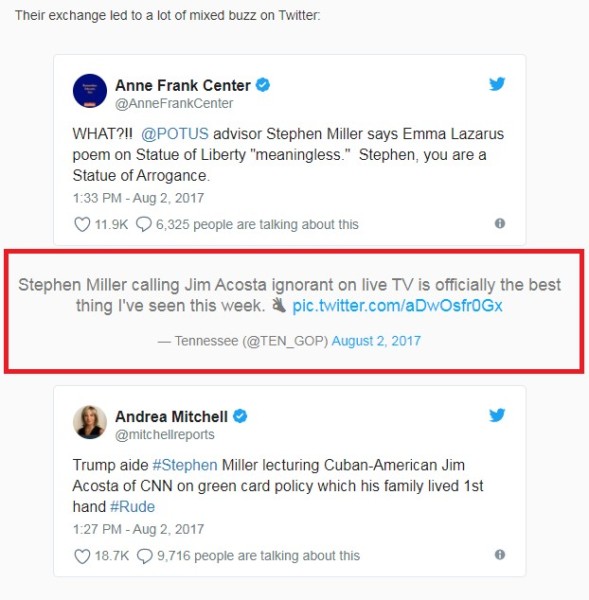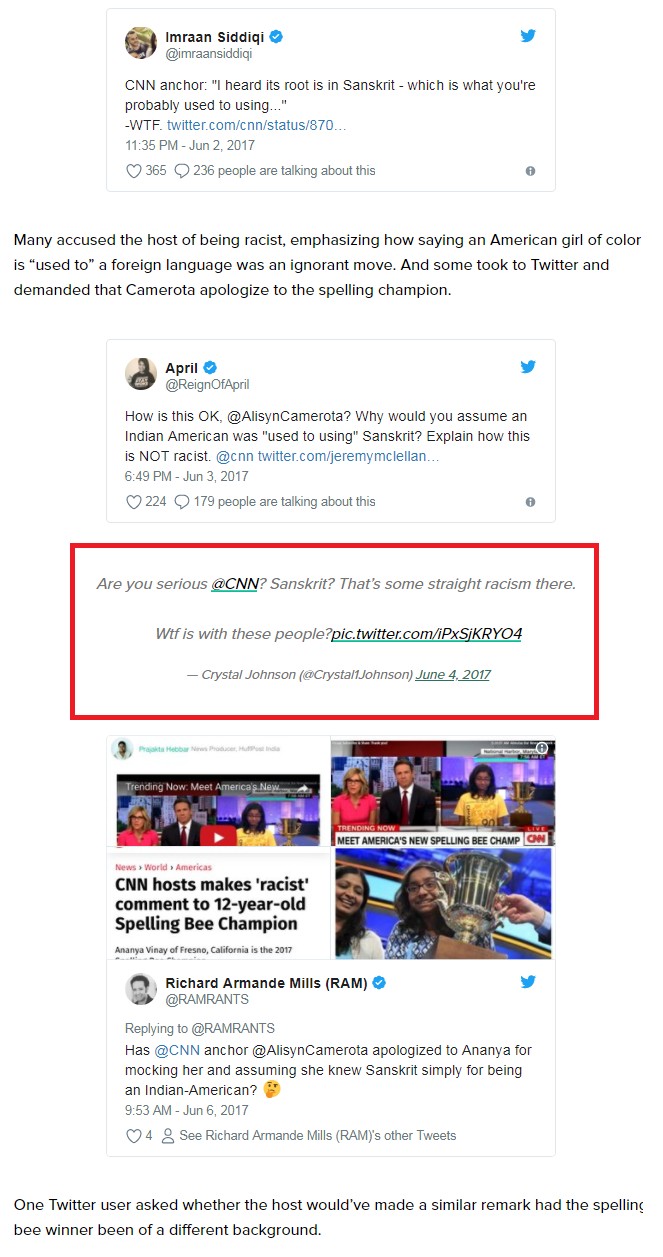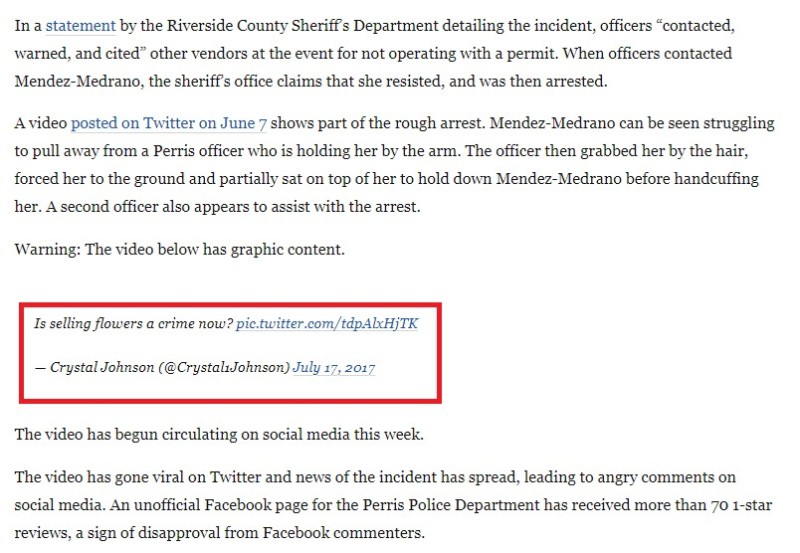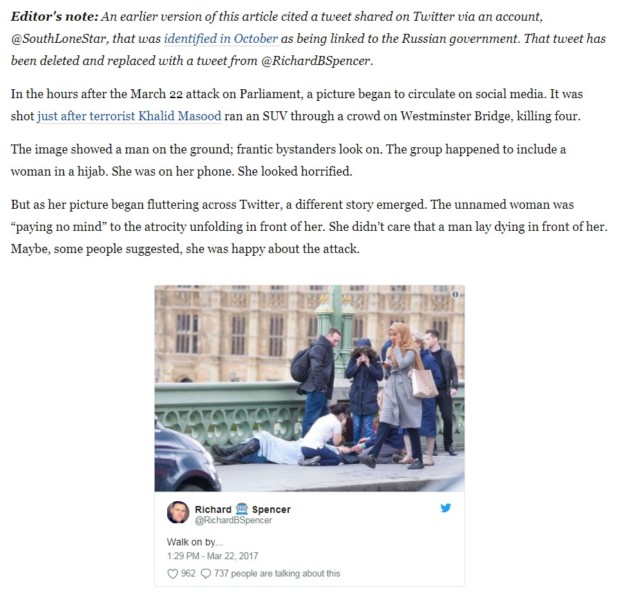Sign up for the daily CJR newsletter.
The New York Times’s Bari Weiss was in the news again yesterday, this time for citing a hoax Twitter account as an example of liberal intolerance. Just how often do such Twitter accounts make it into mainstream media, as @OfficialAntifa did in Weiss’s column?
While it is well-established that Russians have imitated US citizens on social media, and that they bought thousands of dollars’ worth of social media advertising, the impact of those attempts is not well understood. Special Counsel Robert Mueller’s indictment of 13 Russian agents last month suggests that the agents saw themselves as conducting “information warfare” against the United States to delegitimize the American political process and “sow discord” online.
In a new study at the University of Wisconsin-Madison, we look at how often, and in what context, Twitter accounts from the Internet Research Agency—a St. Petersburg-based organization directed by individuals with close ties to Vladimir Putin, and subject to Mueller’s scrutiny—successfully made their way from social media into respected journalistic media.
We searched the content of 33 major American news outlets for references to the 100 most-retweeted accounts among those Twitter identified as controlled by the IRA, from the beginning of 2015 through September 2017. We found at least one tweet from an IRA account embedded in 32 of the 33 outlets—a total of 116 articles—including in articles published by institutions with longstanding reputations, like The Washington Post, NPR, and the Detroit Free Press, as well as in more recent, digitally native outlets such as BuzzFeed, Salon, and Mic (the outlet without IRA-linked tweets was Vice).
This past fall, Recode, with the aid of the media-intelligence firm Meltwater, found that stories with IRA tweets appeared even in mainstream news. Our study confirms and extends this research, focusing on major mainstream and partisan outlets, and analyzing how IRA tweets were used in stories.
Below is an overview, taken from our study, of the outlets in which IRA tweets appeared:
Outlets and number of articles with IRA-linked tweets
A note on our method: We used open-source database MediaCloud to conduct our search, which ran from the beginning of 2015 until the accounts were suspended by Twitter in September 2017. A team of researchers coded 29 variables about each article.
The outlet without any IRA-linked tweets was Vice. One LA Times news story contained two IRA-linked tweets, from @pamela_moore13 and @ten_gop. The one New York Times news story we identified was from 2015, and contained an IRA-linked account tweeting in Russian about Russian-Turkish relations.
IRA-created content was widespread in news, in the sense that many different outlets reproduced IRA content, but by no means was it common (notably, some of these outlets published thousands of articles during our search period).
Our research revealed several notable trends.
ICYMI: How hacked emails and a yacht in Monaco ended my career at The Wall Street Journal
Twitter as convenient “public opinion”
The bulk of IRA embeds in our study occurred after, not during, the election; in fact, only 5 percent of the stories with IRA embeds were about the election. Instead, most of the stories covered hot-button social and political issues, such as racism and healthcare—a finding consistent with analyses showing the Russian campaign’s interest in sowing discord in the US.
IRA accounts typically made their way into articles when news outlets wanted to illustrate “current opinion” by quoting tweets: Nearly 70 percent of the time, the information contained in the reproduced tweets were opinions about ongoing events.
IRA accounts typically made their way into articles when news outlets wanted to illustrate “current opinion” by quoting tweets
For example, in August 2017, USA Today covered a verbal disagreement over immigration policy between White House adviser Stephen Miller and CNN reporter Jim Acosta. The article begins with a typical account of a back-and-forth in the White House briefing room, but then turns to how the exchange was viewed on Twitter. Here, the author includes a tweet from now-notorious IRA account @TEN_GOP among other, legitimate ones (in the screenshot from USA Today below, @TEN_GOP’s tweet looks different than the others because Twitter has deleted the handle, and the tweet no longer fully embeds on the page):
IRA tweets were especially prominent in stories about Twitter users’ views or reactions, a growing subgenre of online reporting. For example, one HuffPost story in June 2017 covered the Twitter reaction to a CNN host’s racially insensitive comment (“Twitter Drags CNN Host Who Implied Indian-American Spelling Bee Champ Uses Sanskrit”). Though the story offered some context, it was essentially built around six tweets, including one from IRA account @Crystal1Johnson:
This type of reporting made up a major portion of our sample: Sixty-five percent of the appearances of IRA accounts occurred in reporting that described something happening on Twitter, such as an argument or the use of a particular hashtag. It appears that stories made up of strings of tweets may not have been not rigorously verified by journalists. Previous research confirms the tendency of journalists to rely on Twitter for sources, quotes, and contacts, often without external validation to ensure the veracity of the information.
News and fake news
Though more often quoted for their expressive opinions, IRA-linked handles did occasionally function as sources of information. In most of these instances, the information provided was real. Only a small fraction (6 percent) of articles contained IRA-linked tweets with empirically false claims, or “fake news.” Instead, real stories were used to stoke outrage—a finding consistent with recent work describing IRA tweets’ use of news links. One Washington Post article, for example, covered Twitter outrage over a violent arrest of a flower vendor in California. A tweet from @Crystal1Johnson, which included a video, served as the main source of information for the story:
Partisan reporting
The IRA-linked accounts that made it into news media often espoused stereotypically partisan sentiments on both the right and left. Accounts with tweets that were repeatedly embedded in the news stories we found—@TEN_GOP, @Jenn_Abrams, @Pamela_Moore13, @Crystal1Johnson, and @SouthLoneStar (collectively accounting for more than 75 percent of the sample)—all expressed strong and consistent partisan beliefs.
Partisan, online outlets in the sample (foremost, HuffPost, The Daily Caller, and The Blaze) utilized IRA accounts most often. Liberal outlets often mocked right-leaning IRA accounts, while conservative outlets praised those accounts or used them to promote controversial opinions, and vice versa.
For example, in a February 2017 story about Iranian film director Asghar Farhadi winning an Oscar, HuffPost quickly pivoted to indignant reactions of conservatives on Twitter, illustrated by a tweet from @TEN_GOP, among others:
For its part, in a June 2017 story about a road accident in Calais, France, The Daily Caller used a tweet from @Pamela_Moore13 to prominently frame its story with incendiary language:
While the articles we identified represent a tiny fraction of all articles produced from the outlets we surveyed during this two-year period, the fact that American-imitating Russian trolls appeared in nearly every outlet we searched is troubling. The presence of these tweets in any news story represents a failure to verify the origin of the views used in news.
It is also critical to note what we did not find. Except for a few cases, we did not find fake news. Instead, the presence of IRA accounts almost always indicated the reproduction and amplification of opinion—often evocative or provocative versions of opinions already in circulation.
The eagerness to draw attention to outlandish opinions may have encouraged outlets to survey Twitter and occasionally reproduce unverified content. This could hardly be better captured than by the evolution of one March 2017 Washington Post story. Headlined “The far right turned this Muslim woman into a ‘monster’ online. That’s despicable,” the story briefly described a photograph circulating in social media of a woman wearing a hijab, apparently walking past a person wounded in a terrorist attack. After a handful of sentences, it embedded a tweet from IRA account @SouthLoneStar, which shared the photo and wrote: “Muslim woman pays no mind to the terror attack, casually walks by a dying man while checking phone…”
After Twitter’s suspension of IRA accounts, The Washington Post updated the story. It removed the @SouthLoneStar tweet but replaced it seamlessly with another presenting the same picture, from white nationalist @RichardBSpencer. The story is otherwise unchanged:
ICYMI: A “slow-motion meltdown” on live television
Has America ever needed a media defender more than now? Help us by joining CJR today.













